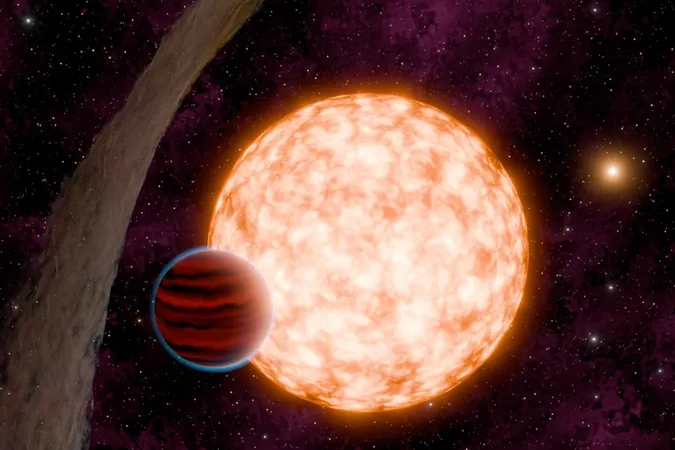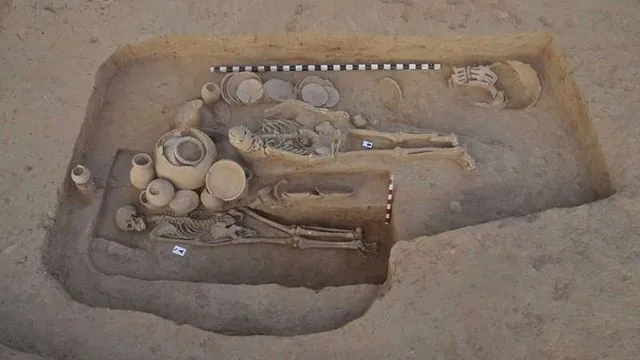
Introducing TI-DYE 1b: The Young Exoplanet That Could Revolutionize Our Understanding of Planet Formation!
2024-11-20
Author: Olivia
Introduction
Since the 1990s, when astronomers first unveiled the existence of exoplanets—worlds beyond our own solar system—thousands have been discovered, ranging in size and characteristics. Yet, amidst this cosmic diversity, few are as intriguing as TI-DYE 1b.
The Age and Significance of TI-DYE 1b
This young exoplanet, pronounced “TIE-DYE 1b,” is estimated to be a mere three million years old, which is just about 0.07% the age of Earth. Its youthful nature makes it a crucial piece of the puzzle in understanding the planet formation process, acting as a potential Rosetta stone for astronomers and planetary scientists alike.
Location and Discovery
Orbiting a star approximately 520 light years away in the constellation Taurus, TI-DYE 1b is in an ideal position for further detailed study. "We originally believed that planets this young couldn’t be found," said Madyson Barber, a graduate student at the University of North Carolina at Chapel Hill, who spearheaded the discovery, documented in the journal Nature.
Historically, locating such young planets is challenging. They typically form within dense disks of gas and dust that obscure what's happening inside. Discoveries of young planets have often been limited to solar systems oriented face-on, which makes the inner portions of these disks easier to observe. Remarkably, TI-DYE 1b is transiting in an edge-on orbit, allowing it to repeatedly cross in front of its star. This unique positioning has revealed its presence due to the tilted outer portion of the disk surrounding its star, which creates an unobstructed view into its inner regions.
Method of Detection
Although TI-DYE 1b is too dim and small to be seen directly, its existence was revealed through data collected by NASA’s Transiting Exoplanet Survey Satellite (TESS). Launched in 2018, TESS has been systematically scanning the sky for exoplanets by monitoring stars for consistent dips in brightness, a telltale sign of a planet transiting in front of them. Such transits allow scientists to infer a planet's size based on the dip's magnitude and determine its orbital period.
Research and Implications
In her research, Ms. Barber focused on TESS data from stars under 500 million years old, aiming to capture transiting planets of different ages, which she describes as “snapshots in time” crucial for understanding their evolutionary trajectories. Transiting planets like TI-DYE 1b offer astronomers a unique advantage: each time the planet crosses in front of its star, the star's light filters through the planet's atmosphere, providing vital information about its composition and structure.
Physical Characteristics
Current findings suggest that TI-DYE 1b is inflated, resembling a cotton ball. While it approaches the size of Jupiter, its mass is less than one-third that of Jupiter. This puffy characteristic aligns with expectations for newly forming planets that are still gathering material from their surrounding disk. Ms. Barber speculates that over millions of years, TI-DYE 1b could evolve into a gaseous planet smaller than Saturn or transform into a "super-Earth," a rocky planet larger and heavier than ours. The ultimate fate of TI-DYE 1b remains uncertain.
Orbital Dynamics
Another peculiar aspect of TI-DYE 1b is its rapid orbit—it completes a full revolution around its star every 8.8 days. David Lafrenière, an astronomer at the University of Montreal, noted the improbability of planets forming this close to their stars. He believes that TI-DYE 1b likely migrated inward after its formation, with all these processes occurring in a remarkably short span of just three million years.
Importance of Further Observations
This age is significant as it marks a critical time when the disks that give rise to planets begin to dissipate. Further observations of this nascent planetary system could provide crucial insights into the mechanics of planet formation and evolution, shedding light on how planets—as we know them—come to be.
Conclusion
In summary, TI-DYE 1b's discovery is not just a tantalizing glimpse into the formation of exoplanets, but a potential key to unlocking the mysteries of our universe. Stay tuned as astronomers delve deeper into this cosmic enigma!









 Brasil (PT)
Brasil (PT)
 Canada (EN)
Canada (EN)
 Chile (ES)
Chile (ES)
 España (ES)
España (ES)
 France (FR)
France (FR)
 Hong Kong (EN)
Hong Kong (EN)
 Italia (IT)
Italia (IT)
 日本 (JA)
日本 (JA)
 Magyarország (HU)
Magyarország (HU)
 Norge (NO)
Norge (NO)
 Polska (PL)
Polska (PL)
 Schweiz (DE)
Schweiz (DE)
 Singapore (EN)
Singapore (EN)
 Sverige (SV)
Sverige (SV)
 Suomi (FI)
Suomi (FI)
 Türkiye (TR)
Türkiye (TR)